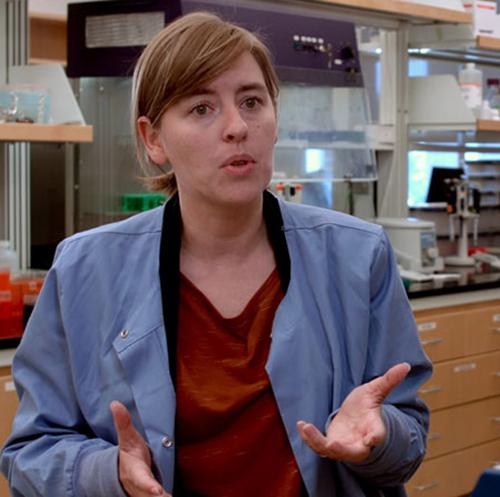By analyzing ancient poop, researchers have discovered how much the human microbiome has changed over the past millennium, what may have brought about the change, and how those changes formed today’s human microbiome
Two thousand year-old human poop has yielded new insights into the evolution of the microbial cells (microbiota) inhabiting today’s human gut—collectively known as the human microbiome—that could help pathologists and clinical laboratories better understand diseases that may be linked to gut bacteria.
A recent study conducted by an international team of scientists reveals that the gut bacteria of today’s humans may have been altered by the onset of modern processed foods, sanitation, and the use of antibiotics.
In “Reconstruction of Ancient Microbial Genomes from the Human Gut,” published in the journal Nature, the researchers wrote, “In this study, we establish that palaeofaeces [Paleofeces in the US] with well-preserved DNA are abundant sources of microbial genomes, including previously undescribed microbial species, that may elucidate the evolutionary histories of human microbiomes. Similar future studies tapping into the richness of palaeofaeces will not only expand our knowledge of the human microbiome but may also lead to the development of approaches to restore present-day gut microbiomes to their ancestral state.”
Ancient Poop Is a ‘Time Machine’ into the Human Microbiome
To perform the research for this study, scientists analyzed Deoxyribonucleic acid (DNA) from eight preserved, fossilized feces (coprolites) to gain insight into the gut bacteria of ancient communities. The samples used in the research were originally found in rock formations in Utah and Mexico and were preserved by dryness and stable temperatures. The coprolites were between 1,000 and 2,000 years old.
“These paleofeces are the equivalent of a time machine,” Justin Sonnenburg, PhD, Associate Professor, Microbiology and Immunology at Stanford University and co-author of the study, told Science. Tiny bits of food found in the coprolites indicated that the diet of the ancient people included:
- maize,
- beans,
- prickly pear,
- ricegrass, and
- grasshoppers.
The dried-out poop samples were first radiocarbon dated. Then, tiny fragments of the coprolites were rehydrated which allowed researchers to recover longer DNA strands than those found in previous, similar studies. This study compared the microbiome of the ancient populations to that of present-day individuals. The authors of the study suggest that during the past millennium, the human microbiome has lost dozens of bacterial species and has become less diverse.
“These are things we don’t get back,” the study’s lead author Aleksandar Kostic, PhD, Assistant Professor of Microbiology at Harvard Medical School told Science.
Modern Diseases Linked to Gut Microbiome
Other research studies have linked lower diversity among gut bacteria to higher rates of modern diseases, such as diabetes, obesity, and allergies, Science noted.

“We really wanted to be able to go back in time and see when those changes [in the modern gut microbiome] came about, and what’s causing them,” Archeological Geneticist Christina Warinner, PhD, Assistant Professor of Anthropology at Harvard University and one of the authors of the study, told Science. “Is it food itself? Is it processing, is it antibiotics, is it sanitation?” Warinner is the Sally Starling Seaver Assistant Professor at the Radcliffe Institute, and a group leader in the Department of Archaeogenetics at the Max Planck Institute for Evolutionary Anthropology and affiliated with the faculty of biological sciences at the Friedrich Schiller University in Jena, Germany. (Photo copyright: The Game Changers.)
Ancient versus Modern Microbiome
The ancient microbiomes lacked markers for antibiotic resistance and included dozens of bacterial species that were previously unknown. According to the study, “a total of 181 of the 498 reconstructed microbial genomes were classified as gut derived and had extensive DNA damage, consistent with an ancient origin, and 39% of the ancient genomes offered evidence of being newly discovered species.”
The scientists also discovered that the gut bacteria of present-day people living in non-industrialized societies is more like that of the ancient people when compared to present-day humans living in industrialized societies. But there are still vast differences between the ancient and the modern microbiome.
For example, a bacteria known as Treponema is virtually unknown in the microbiome of current humans, even those living in non-industrialized societies. However, according to Kostic, “They’re present in every single one of the paleofeces, across all the geographic sites. That suggests it’s not purely diet that’s shaping things,” he told Science.
What Can Clinical Laboratories Learn from Ancient Poop?
The ancient poop study scientists hope that future research on coprolites from the past will reveal more information regarding when shifts in the microbiome occurred and what events or human activities prompted those changes.
Research on the human microbiome has been responsible for many discoveries that have greatly impacted clinical pathology and diagnostics development.
As Dark Daily wrote in “Harvard Medical School Study Finds ‘Staggering’ Amounts of Genetic Diversity in Human Microbiome; Might Be Useful in Diagnostics and Precision Medicine,” research conducted by scientists from Harvard Medical School and Joslin Diabetes Center into how individual microbial genes in human microbiome may contribute to disease risk uncovered a “staggering microbial gene diversity.”
Microbiologists and other medical laboratory scientists may soon have more useful biomarkers that aid in earlier, more accurate detection of disease, as well as guiding physicians to select the most effective therapies for specific patients, a key component of Precision Medicine.
The findings of this study are another step forward in understanding the composition and functions of gut bacteria. The study of the microbiome could prove to be a growth area for clinical laboratories and microbiology labs as well. It is probable that soon, labs will be performing more microbiome testing to help with the diagnosis, and treatment selection and monitoring of patients.
—JP Schlingman
Related Information
Ancient Poop Reveals Extinction in Gut Bacteria
Ancient Human Faeces Reveal Gut Microbes of the Past
Reconstruction of Ancient Microbial Genomes from the Human Gut



